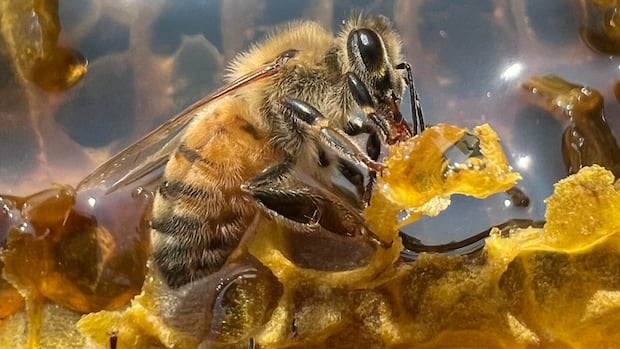Scallop fishers scoop invasive sea vomit from Bay of Fundy in aid of science

Scallop fishers in the Bay of Fundy are on the lookout for an unusual and somewhat repulsive species that has been discovered growing on the seabed. Known as sea vomit, sea squirt, or pancake-batter tunicate, this invasive marine invertebrate has raised concerns due to its rapid spread and potential impact on the local ecosystem.
The Huntsman Marine Science Centre in Saint Andrews has been studying sea vomit and recently enlisted the help of the Fundy North Fishermen’s Association to collect samples for a three-year research project. Emily Blacklock, the science director for the association, is leading a team of 50 scallop fishers in the search for sea vomit during the current scallop season.
Scallop fishers are using large drags to scrape the seabed, inadvertently scooping up sea vomit along with their catch. Blacklock and her team are collecting samples of the strange species, storing them in vials filled with ethanol, and documenting where and when they were found. This information will help researchers understand the distribution and impact of sea vomit in the Bay of Fundy.
Claire Goodwin, a research scientist at Huntsman, explained that sea vomit is native to Japan and forms a rubbery crust on the ocean bed. This crust can smother marine life by competing for space with other species and blocking access to food and shelter. If left unchecked, patches of sea vomit can spread rapidly, covering large areas of the seabed and disrupting local industries such as the scallop fishery.
The research project, funded by the Department of Fisheries and Oceans, aims to map the spread of sea vomit in the Bay of Fundy, identify potential solutions for containment, and conduct genetic studies to understand its origins. Over the next three years, fishers, divers, and remotely operated underwater vehicles will assist in collecting samples and surveying different areas of the bay.
Goodwin emphasized the importance of stopping the spread of sea vomit to prevent further damage to the ecosystem. With water temperatures in the Bay of Fundy remaining relatively warm due to climate change, the invasive species has been able to thrive and spread unchecked. By working together with local fishers and researchers, there is hope that sea vomit can be contained and its impact minimized.
As the sea vomit project progresses, educational exhibits will be developed to raise awareness in New Brunswick and Nova Scotia. Scallop fishers who are interested in participating in the research project are encouraged to join the efforts in locating and documenting sea vomit in the Bay of Fundy. With continued collaboration and research, there is hope that a solution can be found to address the spread of this unusual and potentially harmful species.




